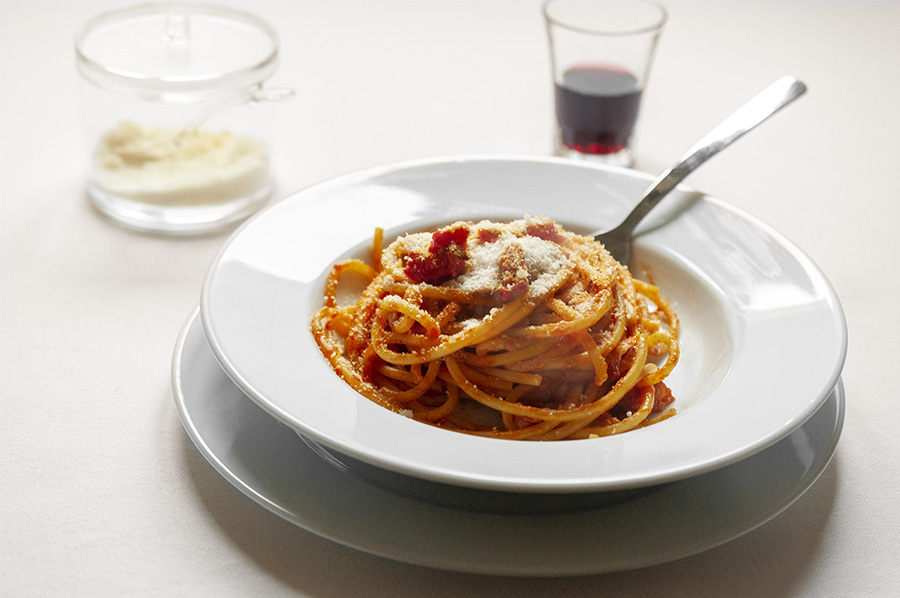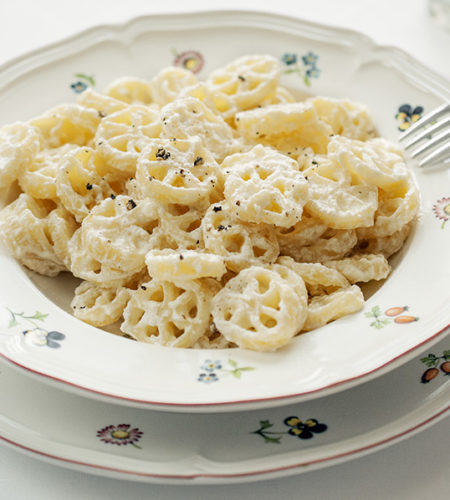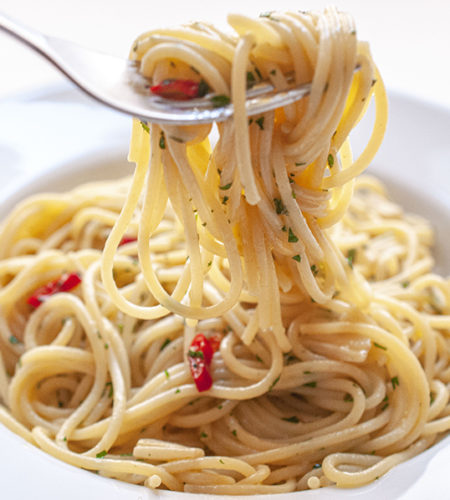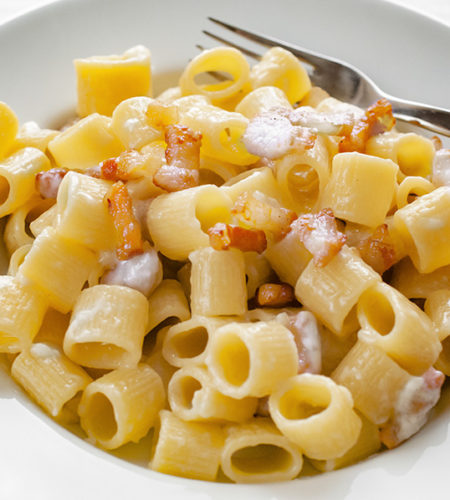Bucatini all’Amatriciana is one of the most popular Lazio dishes in Italy and in the world.
The name derives from the city of Amatrice, a town near Rome. In the nineteenth century, several innkeepers of the city were originally from Amatrice, so that the term “Matriciano” came to mean “inn with kitchen.”
The first written testimony of the use of the amatriciana sauce to season pasta is found in the cookbook of the Roman cook Francesco Leonardi, who served it at the Pope’s court. It was a high-class blow: Leonardi imposed a popular dish in a banquet at the Quirinale in honor of Francis I Emperor of Austria, organized by Pope Pius VII in April 1816.
Roman by birth, Leonardi had worked in the courts in France, as well as in Poland, Turkey, Germany, and England until arriving with the role of a cookat the court of Catherine II of Russia.
From the nineteenth century until the beginning of the twentieth century, the popularity of the dish in Rome grew considerably until it became an integral part of the Capitoline culinary tradition.
Aunt Silvana is Dad’s sister. She does not like to cook, but the few things she does are very good. This is her recipe for one of the dishes that I loved most as a child, especially because the bucatini,when they are cooked, release the sauce and splash all over clothes … in fact, the most fun sport for Roman children was to finish the meal completely covered with sauce!
Bucatini all'Amatriciana
- Preparation time: 20 minutes
- Ingredients for 4 servings
- Difficulty: Easy recipe
- Ingredients
- 350 gr or 12 oz of bucatini pasta
- 110 gr or 4 oz of seasoned guanciale (pork cheek)
- 250 gr or 9 oz of peeled tomatoes (half a can)
- 1 tablespoon of red wine
- Roman pecorino cheese to taste
- Salt to taste
- Instructions
- Add the water into a pot and bring to a boil.
- In a large frying pan, add the guanciale (pork cheek) cut rather thick and cook on a low heat so that it “sweats” the fat and becomes lightly browned. Add the vinegar and let it evaporate. Remove it, putting it on absorbent paper, and pour the previously crushed peeled tomatoes with a fork. Cook over lowheat until the sauce is cooked for fifteen minutes. Salt if necessary.
- In the pasta saucepan, salt the boiling water with the coarse salt and toss the pasta.
- Cook until “al dente” and drain it. Then add it to the pan with the sauce. Let simmer for 2 minutes. Add the crispy guanciale.
- Serve with plenty of grated pecorino.
Tips to ensure the success of the dish:
- To cook the guanciale correctly, it is important to start cooking with a cold pan. If you want crispy, you must first melt the fat and then remove the fat from the pan and continue cooking until they become crispy. Then remove the guanciale from the pan and place on paper towels to ensure it remains crispy and put the fat back in the pan to start cooking the sauce.
- Salt the sauce only after cooking the sauce remembering that the pecorino cheese and the guanciale are really salty.
- To best cook pasta, 1 US quart of water must be considered for every serving.
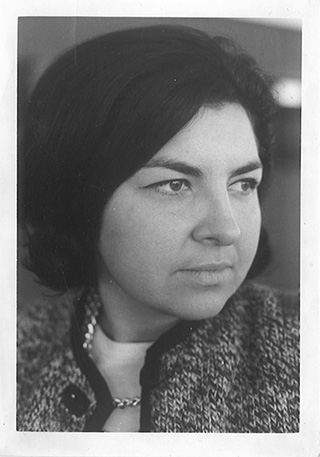 Aunt Silvana
Aunt Silvana

